
From the walkable shallows to several hundred feet deep, coral and artificial reefs are more than ocean décor. They are thriving ecosystems filled with a variety of marine life, working together to help keep the circle of life in check, except for the lionfish.
Insatiably hungry, lionfish are an invasive species in the southeastern United States, the Caribbean, and many other parts of the world. Native to the South Pacific Islands and Indian Ocean, they have venomous spines and few predators outside their native habitat. Moray eels are known to eat lionfish. However, lionfish will mate year-round, and there are not enough predators to keep the population from decimating reefs and reef fish.
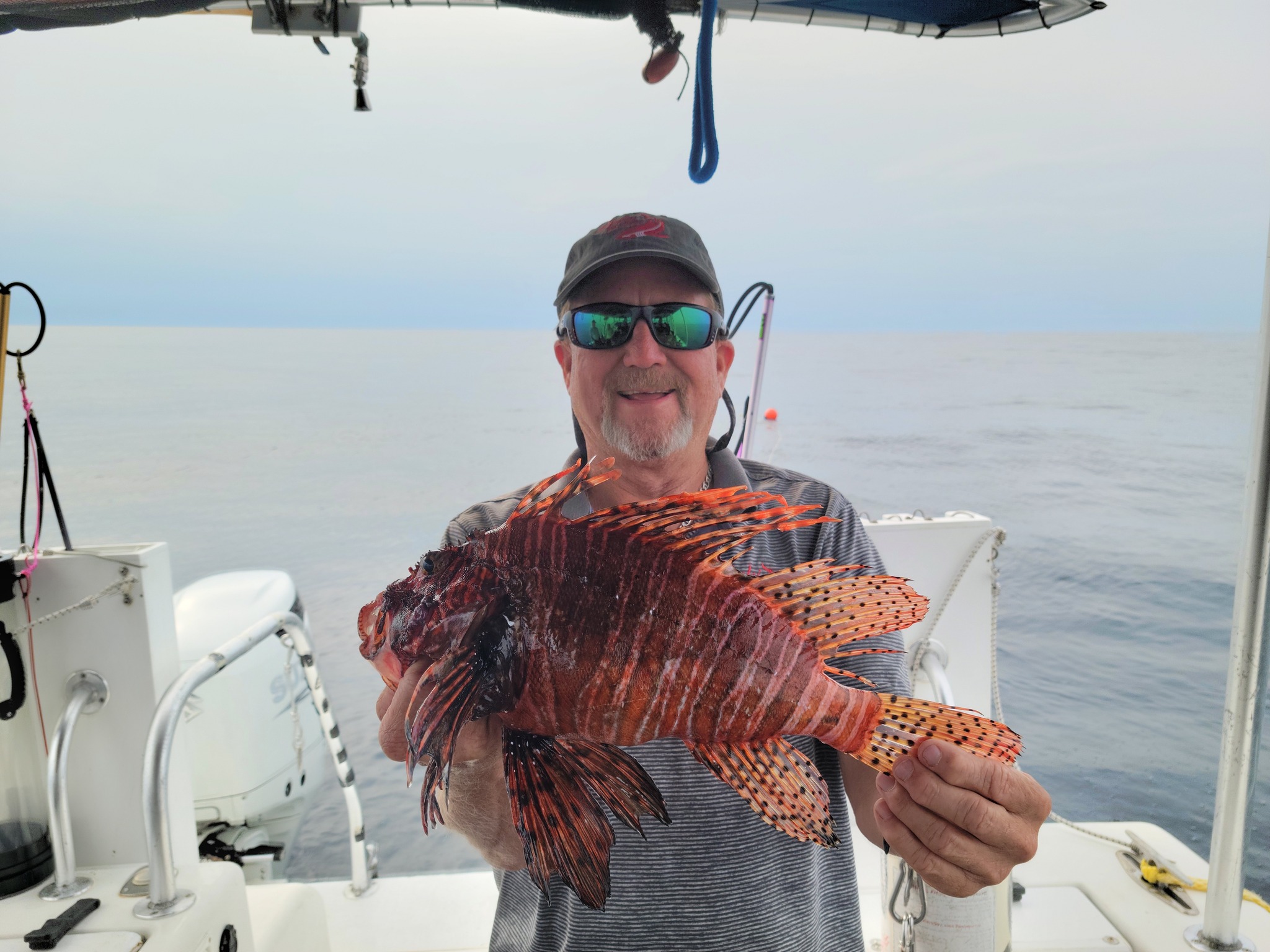
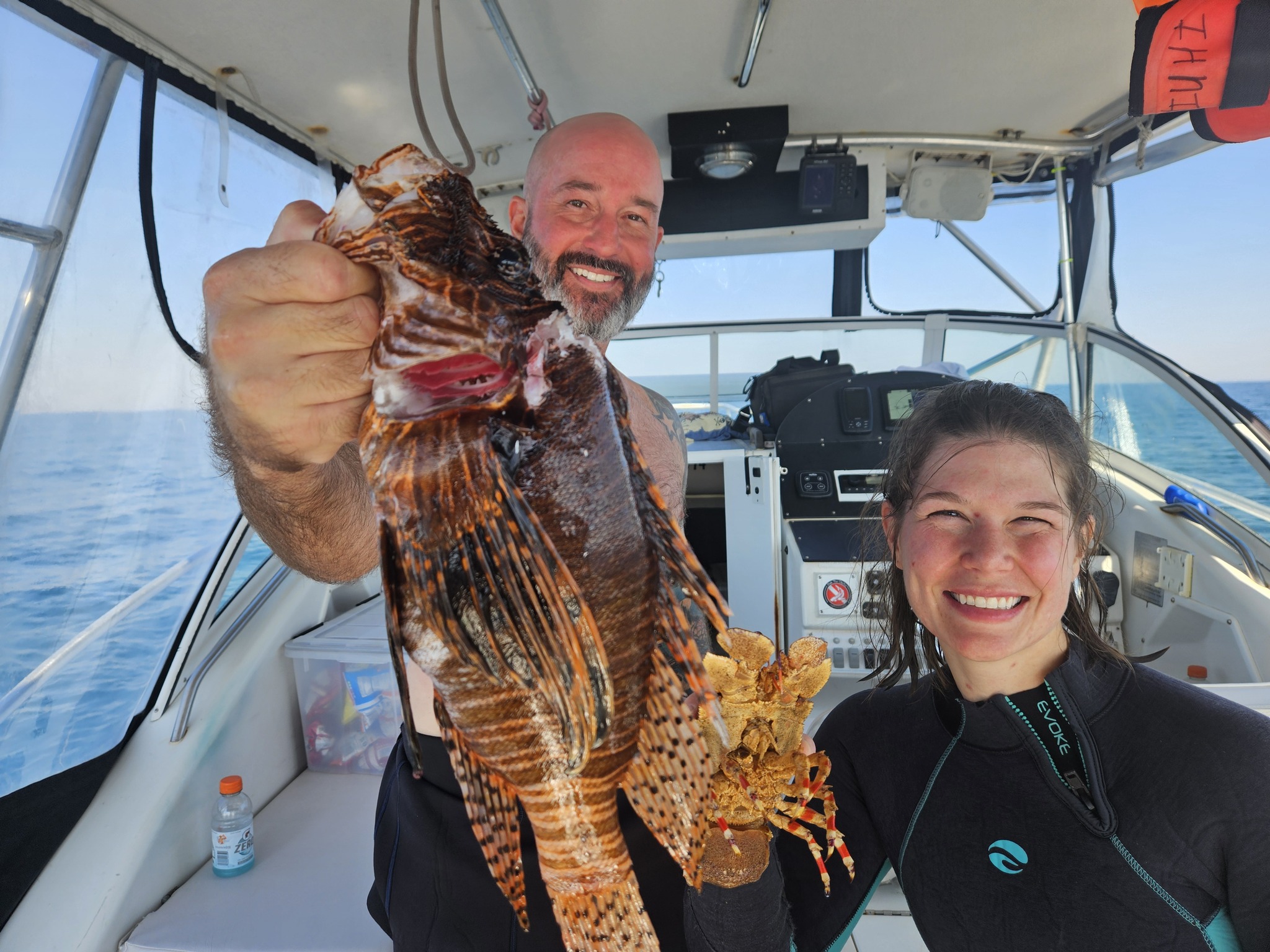
Lionfish are believed to have made their way into Gulf waters through aquarium release, meaning someone had some of them in their aquarium, didn’t want them anymore, and dumped them in the ocean. “Our coral reef systems are enduring so many other stresses that (lionfish are) another cut in the death by 1,000 cuts sort of scenario,” says Chris Stallings, a professor of marine science at the University of South Florida.
All hope for our reef fish is not lost. People like Chris Stallings and Andy Ross with Niuhi Charters and the Emerald Coast Open are leading efforts to help curb the invasive species, and they are calling on adventures, sportspeople, and citizen scientists alike to help. Lionfishing is the sport of using spear guns or Hawaiian slings (a spear with a rubber band that you hold and release to fire) to capture the invaders. While Lionfish have been found in shallow waters, they typically live at a depth of 50-plus feet and can be found up to 1,000 feet deep. They have been found in bays, estuaries, and rivers as well. As demersal fish, they typically live near the bottom and often hide under railings, rocks, coral, and overhangs, which is where divers should look when hunting Lionfish.
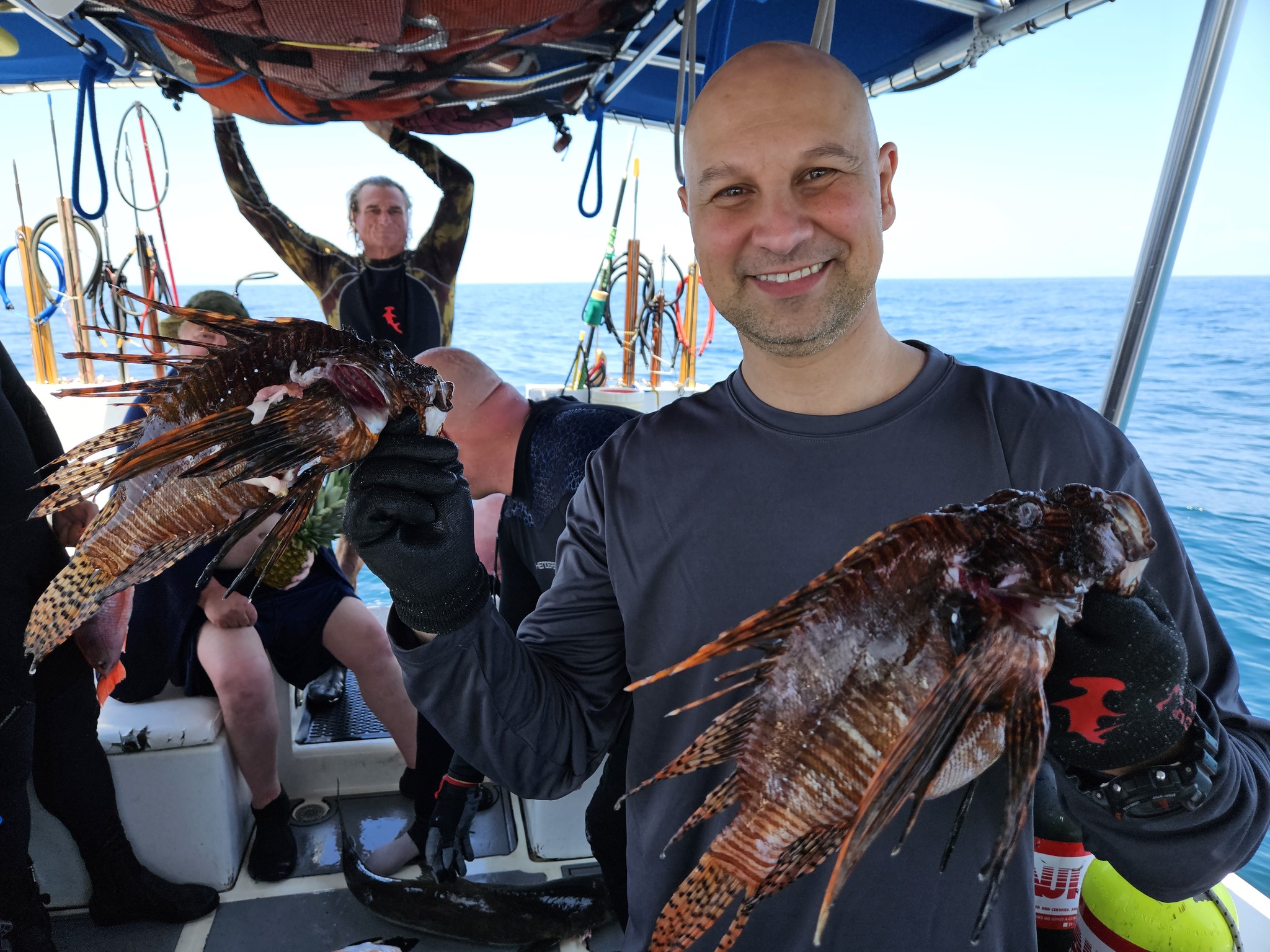
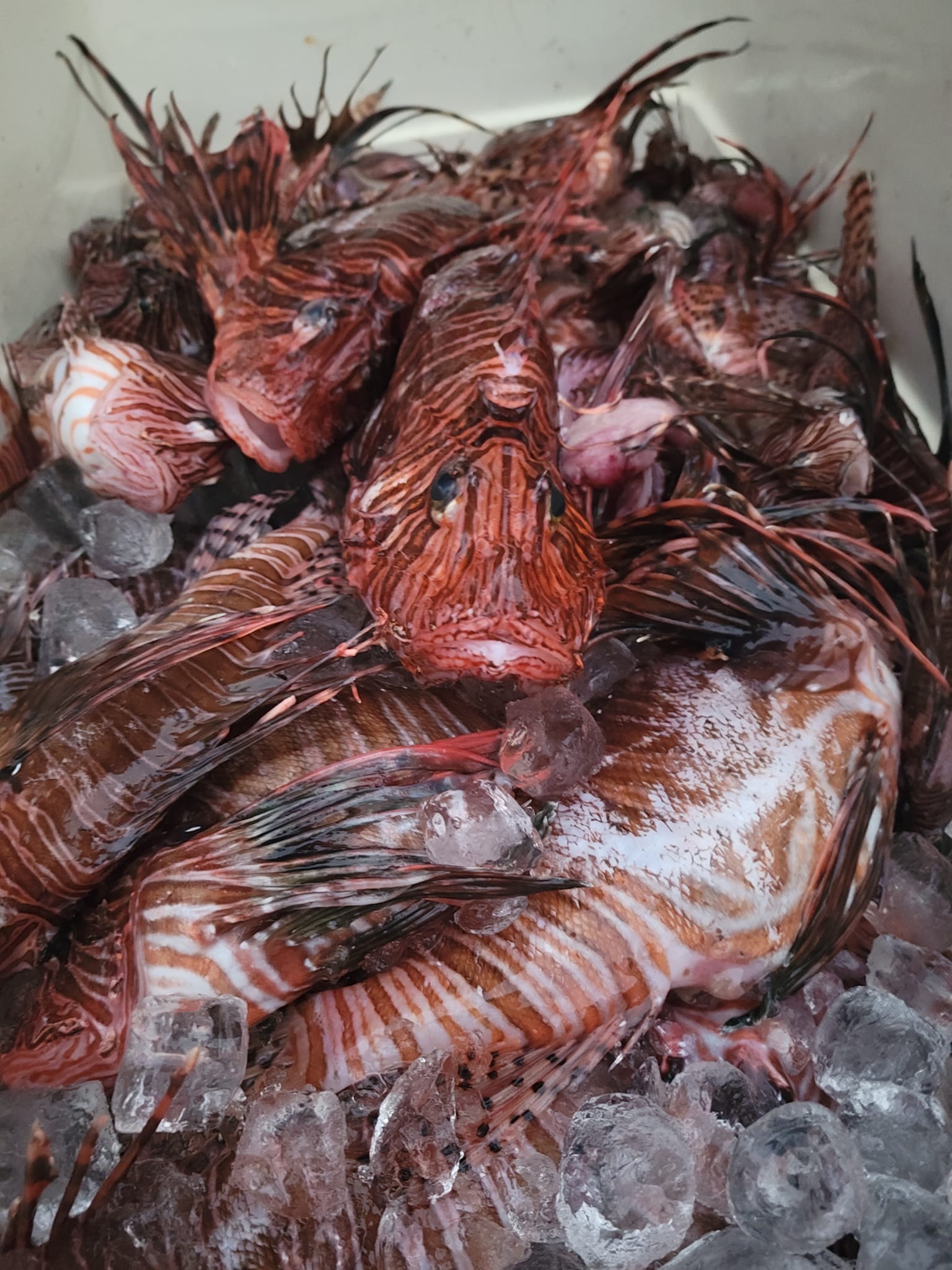
As they are an invasive species, you are not required to have a fishing license to capture and dispatch lionfish. If you are diving, you will need to be properly trained and licensed to go scuba diving. There are several dive shops around the state of Mississippi where you can get certified as an open-water scuba diver. The class is typically online, followed by a classroom session, a series of pool dives, and an open-water certification weekend.
Once certified, if you catch any lionfish, don’t throw them away. Lionfish are good eating, and their white, flaky meat is similar to grouper or mahi mahi. Events like the Emerald Coast Lionfish Open Restaurant Week allow diners to try chef-prepared lionfish in various styles. One popular and delicious way to prepare Lionfish is ceviche.
Many resources and guides are available to help you participate in the most fun way to protect our waters. Captain Andy takes divers just off the coast of Pensacola to hunt for lionfish. Divers on his boat are also covered under his fishing license to catch other fish (in-season, of course). Niuhi runs trips throughout the year, and there is no designated season for hunting lionfish.
Visit niuhidivecharters.com.
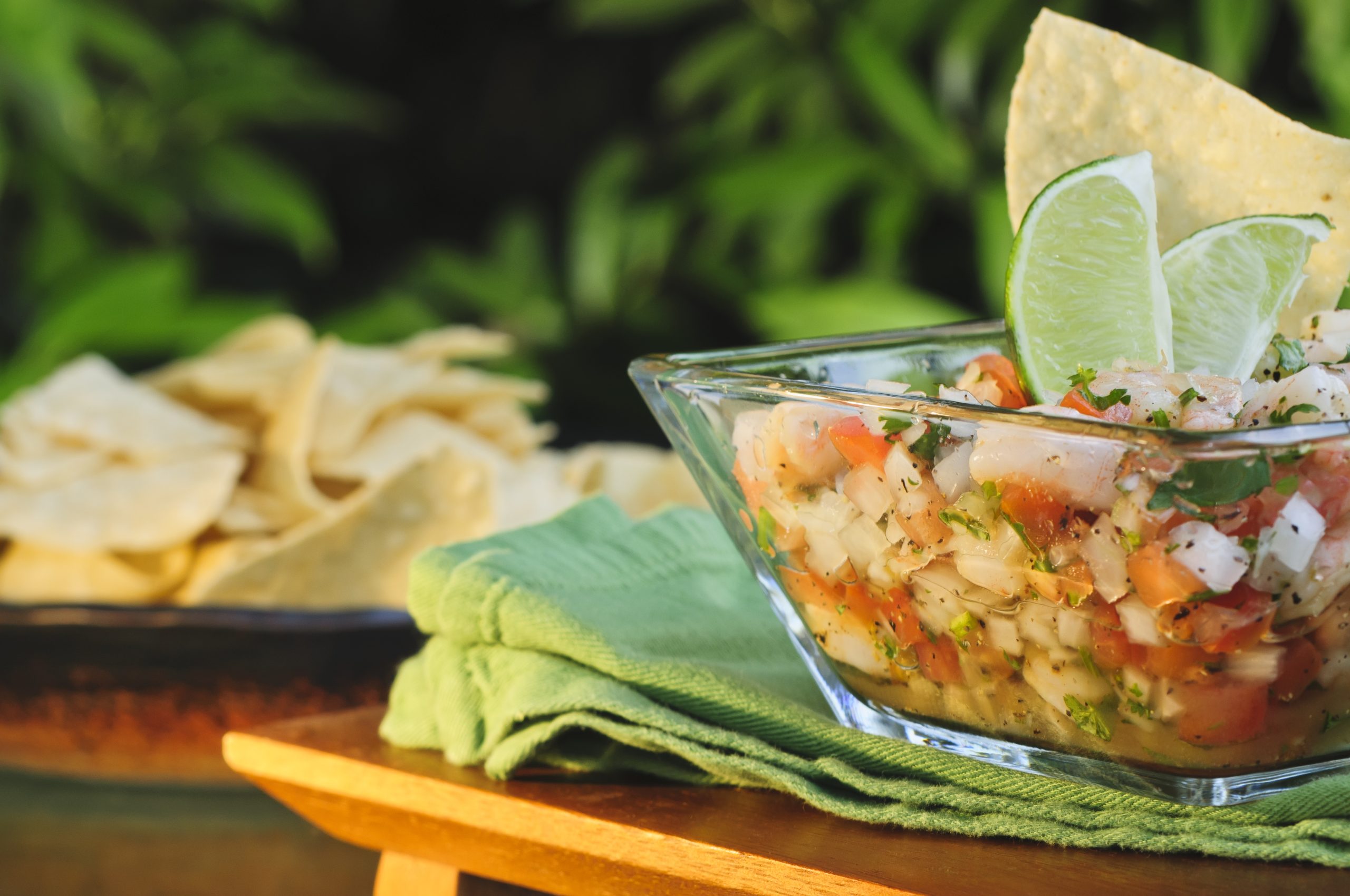
Lionfish Ceviche
2 pounds lionfish filets
1 cup lime juice (approximately 5 large limes)
¼ cup orange juice
¼ teaspoon lime zest
1 tablespoon white vinegar
1 red onion, thinly sliced
1 to 2 jalapeno or serrano peppers, diced
2 medium-size tomatoes, diced
1 large bunch cilantro, chopped
2 avocados, diced
fresh ground pepper and sea salt to taste
Chop Lionfish into evenly sized small chunks. Chop all veggies and set aside. Juice limes and combine with vinegar. Add fish and vegetables, except avocado, to lime juice mixture. Marinate for at least 20 minutes or until the fish is opaque. Season with salt and pepper to taste. Toss with avocado.
Yield: 4-6 servings





